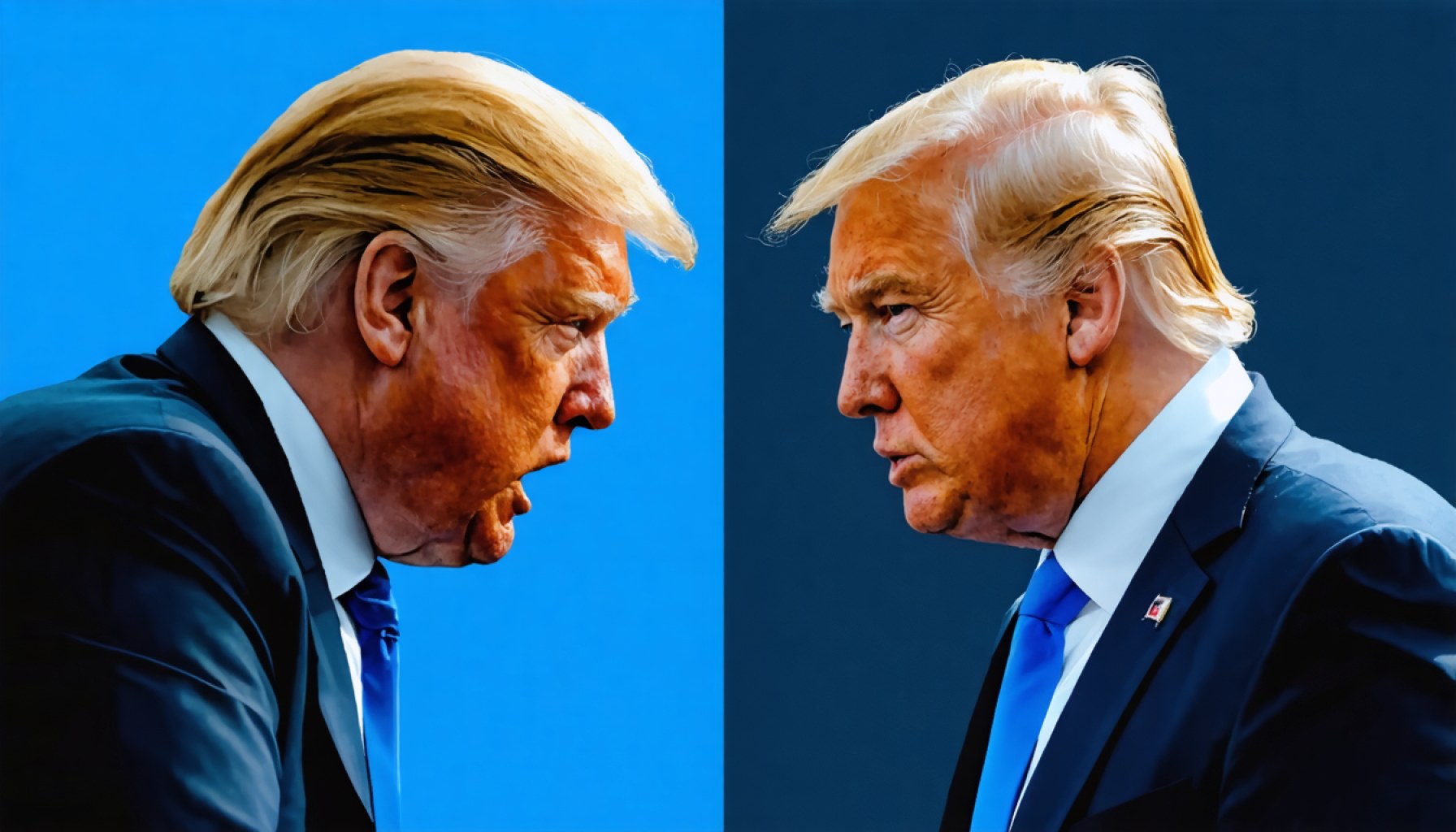- The digital age amplifies President Trump’s critiques of the Federal Reserve, focusing on interest rate policies.
- Trump targets Fed Chair Jerome Powell, advocating for swift rate cuts, citing economic opportunities like dropping oil prices and tariffs enhancing U.S. wealth.
- The European Central Bank’s frequent rate cuts add urgency to Trump’s demands for similar actions from the Fed.
- Jerome Powell emphasizes patience and caution in response to trade-related uncertainties, favoring a measured approach to monetary policy.
- The differing philosophies of Trump and Powell highlight a larger tension between political influence and economic strategy in governance.
- This ongoing dynamic reveals the intricate balance needed to sustain economic growth and stability in global markets.
In a digital age reshaping the corridors of power, President Trump has taken the modern route of airing grievances—from the resolute podium of social media. His focal point? The Federal Reserve and its chair, Jerome Powell, whom he criticizes with fervor akin to a tempest tearing through Wall Street. Like a maestro setting the tone for a symphony of financial scrutiny, Trump’s digital pronouncements are anything but subtle.
The heart of Trump’s critique centers on interest rates. As the European Central Bank teeters on the verge of slashing rates for the seventh time, Trump directs heated words at Powell, branding him as the perpetually tardy central banker, failing to act with the swiftness he believes the times demand. With oil prices dipping and tariffs—according to Trump—fortifying America’s riches, the President paints a picture of an economic landscape ready for a bold change in monetary policy.
Yet, Jerome Powell plays the long game, countering the storm with a stance rooted in meticulous deliberation. Speaking before a gathered audience in Chicago, Powell suggests patience, like a steady captain steering through turbulent seas. He acknowledges the lurking specter of tariff-fueled uncertainty, which casts long shadows over markets and firms alike, prompting caution over any hasty monetary maneuvers.
This clash of economic philosophies underscores a broader narrative in the heart of American governance—an intricate dance between political influence and economic expertise. Trump’s insistence on immediate rate cuts signals a preference for rapid results, akin to a sprinter dashing towards the finish line. Powell, in contrast, plays the strategist in a vast chess game, weighing every move with prudence and foresight.
As global markets watch with bated breath, this dynamic interlude between President and Fed Chair lays bare the complexities of balancing economic vitality with fiscal vigilance. The takeaway? In a world where the fabric of economies is interwoven with political threads, the art of patience might just be the quiet, understated hero in ensuring stability and growth in equal measure.
Trump vs. Powell: The Great Rate Debate – What It Means for You
The Trump-Powell Economic Clash: A Deeper Dive
In the world of high-stakes economic policy, President Trump’s vocal criticism of the Federal Reserve and its chair, Jerome Powell, is more than just political theater; it’s a window into differing philosophies on economic management. Trump’s focus on immediate rate cuts highlights a desire for quick economic boosts to fuel growth, contrasting sharply with Powell’s careful, data-driven approach.
Detailed Analysis and How It Affects You
Interest Rates: The Core of the Debate
– Trump’s Perspective: The President argues for rapid interest rate cuts to stimulate the economy. His viewpoint aligns with a broader strategy to fast-track economic growth, maximizing benefits from low oil prices and the perceived protectionism offered by tariffs.
– Powell’s Approach: Jerome Powell maintains a cautious stance, advocating for a steady hand in managing the economy. He points out the risks of premature rate cuts, including potential inflation and devaluation of the dollar.
How-To: Understand the Impact of Rate Changes
1. Track Mortgage Rates: Lower interest rates often lead to decreased mortgage rates, which can benefit homebuyers.
2. Savings and Loan Adjustments: With rate cuts, savings account returns might decrease, but loan interest rates—like those for personal loans and credit—could become more favorable.
3. Investments: Look for sectors that typically thrive in low-interest environments, such as real estate and utilities.
Real-World Applications
Market Trends:
– Short-Term Effects: Immediate interest rate cuts could boost stock markets as borrowing costs decrease for companies, increasing profitability and encouraging investment.
– Long-Term Stability: Powell’s measured approach aims to ensure long-term economic stability, a priority for risk-averse investors.
Industry Implications:
– Manufacturing and Exports: Lower rates can weaken the currency, potentially making exports cheaper and more competitive but also increasing import costs.
Pros and Cons Overview
Pros of Lower Interest Rates:
– Stimulates consumer spending
– Encourages business investments
– Lowers unemployment through increased economic activity
Cons of Lower Interest Rates:
– May lead to inflation if not managed carefully
– Reduces returns on savings
– Can increase speculative investments, leading to potential bubbles
Security, Sustainability, and Predictions
Economic Security:
– Balancing rate cuts with caution can shield the economy from volatile shifts and safeguard against inflationary pressures.
Sustainability:
– A slow and steady approach can promote sustainable growth, avoiding the pitfalls of rapid economic overheating.
Expert Insights:
– Economists like Paul Krugman have warned about the dangers of hasty policy shifts, emphasizing the need for measured approaches like Powell’s.
Quick Tips for Navigating Economic Changes
– Diversify Investments: Mitigate risks by spreading investments across various asset classes.
– Review Debt Portfolio: Low rates might provide an opportunity to refinance high-interest debt.
– Stay Informed: Regularly check updates from the Federal Reserve and economic news to make timely financial decisions.
Concluding Actionable Recommendations
In the face of these economic debates, it’s essential to keep informed and proactive about personal and business finances. Diversifying investments, reassessing debts, and staying updated on policy changes can position you favorably regardless of the economic course.
For more insights into financial planning and economic news, visit Forbes.
